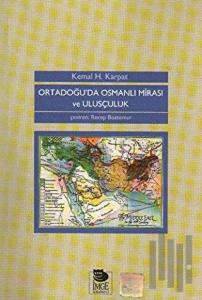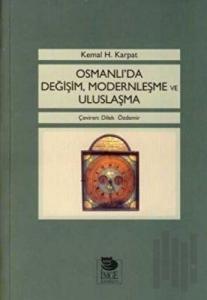
Professor Karpat, one of the most prominent names in the field in the field of Political History, explores the social structure of the Ottoman Empire through different eras and looks at Turkey‘s multi -party democracy culture from a historical perspective. His articles interpret the Ottomen history for a broader audience and lay a vivid picture of events of recent history in front of our eyes. Professor Karpat‘s remarkable articles take us back to 18th century Ottoman days and examine change and modernization in those days, his work also looks into the independence and interaction of various social groups within a muslim state. The Ottoman social structure produced a unique way of practicing" secularism" where spiritual issues regharding faith and administrative issues regarding everyday state politics were keqt completely independent from each other; one was dealing with earthly matters of day to day life the subjects of the Ottoman sultan, the other was to aid the followers of a specific faith in their practice of religion and to prepare for the after - life. Ottomans, despite having a highly complex social structure accommodating a number of ethinc group and various religinous orders, had succestsfulluy sustained friidom of faith by its liader was regarded as a "millet" and enjoyed an absolute autonomy and freedom within its own faith and community in terms of practice of religion, language and social relations. During the Tanzimat era a new generation of religious leaders; who were relatively free from stane rigulations emerged among Ulema and unlike their predecessors they were not dignitaries. The social status of this newly emerging group from within the well -established Ulema, which wes preoccupied at times, to legitimise social and political change from an Islamic perspective or at other times tried to maintain status -quo siding with government, overlapped with the social image of the Ottoman middle -class. Consiquently, the road map of, mornity and secularism set in Republican Turkey was identified by both tthe state, represented by the military and civilian bureaucrats and by the people represented by local notables.
Professor Karpat, one of the most prominent names in the field in the field of Political History, explores the social structure of the Ottoman Empire through different eras and looks at Turkey‘s multi -party democracy culture from a historical perspective. His articles interpret the Ottomen history for a broader audience and lay a vivid picture of events of recent history in front of our eyes. Professor Karpat‘s remarkable articles take us back to 18th century Ottoman days and examine change and modernization in those days, his work also looks into the independence and interaction of various social groups within a muslim state. The Ottoman social structure produced a unique way of practicing" secularism" where spiritual issues regharding faith and administrative issues regarding everyday state politics were keqt completely independent from each other; one was dealing with earthly matters of day to day life the subjects of the Ottoman sultan, the other was to aid the followers of a specific faith in their practice of religion and to prepare for the after - life. Ottomans, despite having a highly complex social structure accommodating a number of ethinc group and various religinous orders, had succestsfulluy sustained friidom of faith by its liader was regarded as a "millet" and enjoyed an absolute autonomy and freedom within its own faith and community in terms of practice of religion, language and social relations. During the Tanzimat era a new generation of religious leaders; who were relatively free from stane rigulations emerged among Ulema and unlike their predecessors they were not dignitaries. The social status of this newly emerging group from within the well -established Ulema, which wes preoccupied at times, to legitimise social and political change from an Islamic perspective or at other times tried to maintain status -quo siding with government, overlapped with the social image of the Ottoman middle -class. Consiquently, the road map of, mornity and secularism set in Republican Turkey was identified by both tthe state, represented by the military and civilian bureaucrats and by the people represented by local notables.
| Taksit Sayısı | Taksit tutarı | Genel Toplam |
|---|---|---|
| Tek Çekim | 31,48 | 31,48 |




















